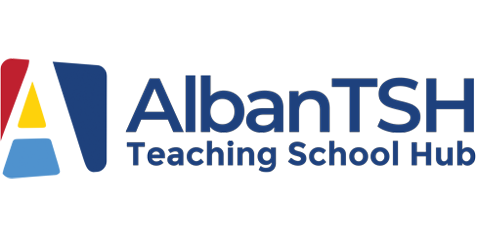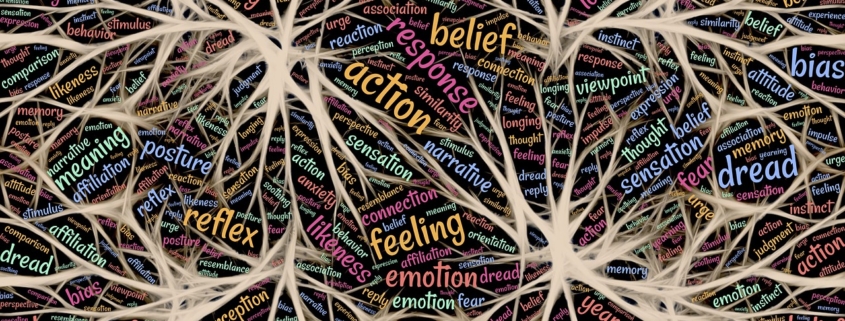Motivation
by Nick Gray, Bushey Meads School
Motivation is a challenge for teachers; on the one hand we know that motivated students are the ideal if we want them to succeed in our classroom, but what actually motivates them to work hard in our lessons is less tangible and open to influence from many different variables. Knowing that pupil motivation can change is important, but what perhaps interests us most as educators is why students’ motivation does change depending on the class or subject.
Intrinsic and Extrinsic Motivation
Whether in the classroom or in our day to day lives, ‘motivation – both intrinsic and extrinsic – results when, as humans, we believe that we will benefit as a result of the action or behaviour’ (Moore, 2019). As Ryan and Deci stated, ‘extrinsic motivation refers to doing something because it leads to a separable outcome, but intrinsic motivation refers to doing something because it is inherently enjoyable’ (Ryan and Deci, 2000). While it may be that we do certain things for an external reward, behave for house points for example, we also want students to enjoy working in our classrooms as ‘according to Bandura, internal rewards for goal attainment can be more powerful influences on effort and achievement than external rewards such as praise or grades’ (Tollefson, 2000). What is important for us as teachers to understand is that ‘it may be more important for teachers to think about the best techniques to improve student performance, rather than techniques to increase their short-term engagement or interest’ (Boxer, 2019). While research suggests that extrinsic rewards can help support and develop motivation in the classroom, it is often for a limited time, ‘rewards can increase the frequency of desired behaviours while decreasing the frequency of undesired behaviours; rewards can improve the behaviour of unmotivated students, although these effects tend only to be in the short term’ (Bear, 2013). So, whilst rewards and praise have a place in any effective classroom, they must be used prudently to create a positive climate of learning, and any rewards should not be given ‘without regard for completion or quality’ (Akin-Little and Little, 2009). What you praise or reward is just as vital as when and how you praise or reward. We want students to develop their own intrinsic motivation, and so, as Covington wrote, ‘students should be taught to analyse the causes of success and failure in constructive ways, in which they can value their hard work and effort as a source of personal worth (Covington, 1998).
Self-determination Theory
Ryan and Deci’s seminal work on self-determination theory allows us to look in greater detail at what motivates us in any given scenario. ‘Self-determination theory declares that, as humans, we all have three basic psychological needs that need to be satisfied for us to be intrinsically motivated to perform at our best: relatedness, autonomy and competence’ (Moore, 2019). In our classrooms it is important that we are creating the culture for students to learn at their optimum level, in terms of behaviour for learning clearly, but also in motivated students who want to learn. As humans we need to feel a ‘sense of belongingness and connectedness to the persons, group, or culture disseminating a goal’ (Ryan and Deci, 2000), and our students need to feel trusted to complete a given task, or make choices on their own. The third element, which we will look at in greater detail is that they also need to be able to succeed – tangible and real success because they have worked hard. ‘Relatedness needs reflect the universal human desire to be valued, respected, and desired important by others’ (Cerasoli et al., 2016). Therefore, what we need to create as teachers is a culture of learning that thrives on motivation, but in order for that to occur, it must ‘be based on trust and have collaboration at its heart’ (Moore, 2019).
In order to fully understand the variables that impact on student motivation we need to look in more detail at what has been raised by self-determination theory. While it is clear that the climate for learning needs to be nurturing and supportive, allowing students to feel connected to one another and vitally, trusted by their teacher. There are also other elements that students need in order to be motivated to work hard in your lessons.
Competence
Ryan and Deci argue that ‘a vital component of individual motivation is competence’ (Boxer, 2019). In fact, ‘the need to feel competent has to be fulfilled for students to be successful in learning’ (Sun and Chen, 2012). It is natural for humans to avoid tasks they do not feel competent at, or do not believe they can do well. For our students this can be magnified by their peers depending on the climate in your classroom but our desire to become competent ‘refers to the desire to demonstrate and improve one’s abilities’ (Cerasoli et al., 2016). We all enjoy getting better at something, feeling like an expert and so do our students. The intrinsic motivation garnered by feeling that you can achieve is a powerful factor. ‘When students master a task, their expectation that they will master similar tasks in the future increases’ (Tollefson, 2000), and this is a factor that we must not underestimate in our classrooms.
Autonomy
Ryan and Deci also state that ‘competence needs to be accompanied by a sense of autonomy’ (Ryan and Deci, 2000). Our students need to feel that they have an element of control in their work, “if individuals are forced or manipulated to engage in a task, they lose the intrinsic desire to subsequently do so” (Cerasoli et al., 2016). Our role as teachers is to create the environment where students are well supported, trusted, engaged and successful, not in comparison to others but rather ‘success on the task needs to be attributed to ability or effort’ (Tollefson, 2000).
Creating the Culture
We all want our students to master our subject and the expectations we hold for students can have a large impact on this. Studies have shown that ‘students who expect to do well in school earn higher grades than students with like ability who expect to fail’ (Battle, 1966; Eccles, 1983), and so we must ensure that our lesson climate promotes deep thinking, embraces the struggle and supports students in order to help them achieve. ‘The importance of creating a supportive, collaborative learning environment that enables students to feel comfortable in accepting challenges is key to building confidence; this includes avoiding practices that make students feel isolated or threatened in their efforts to meet the teacher’s expectations (Brophy, 2004). Mastery goals allow students to focus on ‘self-development or skill development’ (Poortvliet, 2016). ‘Students can be motivated by mastery goals in particular as they emphasise the challenge of learning and understanding, with a goal of continuous improvement despite how many mistakes might be made’ (Moore, 2019).
Supporting Students
Ensuring that your lessons support students in their journey from novice to master is an important skill. ‘Brophy (2004) proposes that teachers should minimize elements of competition and social comparison, while encouraging students to adopt mastery goals, and providing the instructional scaffolding and personal support needed to enable them to attain these goals successfully’ (Moore, 2019). Essentially, we need to ensure that the target is the same for all students, but the level and type of support we offer each child differs depending on their need. This sounds like a great deal of work, but it could be a simple as a well-chosen question, a resource at the appropriate time or some specific and actionable feedback. Be aware of Cognitive Load Theory when presenting material to your class, is this causing overload that disengages students and demotivates them? Think about the environment you have created in your classroom, what new strategies could you instigate to further support your pupils?
There is a wealth of literature surrounding strategies to best support teaching students. Making Every Lesson Count and Teach Like a Champion (see Strategy Check below) are just two which provide multiple ideas to develop challenge and high expectations in the classroom. In order to best support our students we should be attempting to scaffold pupils towards one goal; being able to successfully complete whatever task we have set. This may be writing a paragraph in English or completing a calculation in Maths – even throwing a ball in PE, but it is our interactions with students during their attempts, and the input we give, that will have the greatest impact. As Allison and Tharby state, our role, ‘is to respond to and support students during lessons, and over weeks, months and years, so that they all strive to reach…this common goal’ (Allison and Tharby, 2015).
Willingham’s work on developmentally appropriate practice highlights four areas where we can hopefully benefit our students:
- Use information about principles, but not in the absolute – be aware of what is written on student development, motivation and behaviour, but also know your students – you are the best person to guide them because you know them so well.
- Think about the effectiveness of tasks – Sometimes everything works perfectly, but occasionally students don’t make the progress you were hoping for. This may have been the task you set, but it could have been that some students didn’t grasp a certain aspect. Work with other teachers to create a bank of tasks for different scenarios to help your planning.
- Think about why students don’t understand – Just because a task hasn’t worked doesn’t mean that there is anything inherently wrong with what you have done, the pupils may have been missing background information, they may not have understood the task, they may understand the concept in one format but not another. Make sure you understand why a pupil can’t do something.
- Recognise that no content is inherently developmentally inappropriate – Ensuring that all students reach their potential is more often about scaffolding and support rather than content. If we strive to ensure that all students can reach or excel our goals for them then anything is possible. This challenging quote is taken from Bruner’s research: ‘we begin with the hypothesis that any subject can be taught effectively in some intellectually honest form to any child at any stage of development. It is a bold hypothesis and an essential one in thinking about the nature of the curriculum. No evidence exists to contradict it; considerable evidence is being amassed that supports it’ (Bruner, 1960).
(Willingham, 2008) *Italics added
References
- Akin-Little, A., & Little, S. G. (2009). The true effects of extrinsic reinforcement on ‘‘intrinsic’’ motivation. In Akin-Little, S. G. Little
- Alison, S. & Tharby, A. (2015). Making Every Lesson Count, Crown House Publishing
- Bandura, (1982), Self-efficacy mechanism in human agency. American Psychologist.
- Battle, S. (1966). Motivational determinants of academic competence. Journal of personality and social psychology.
- Bear, (2013). Teacher Resistance to Frequent Rewards and Praise: Lack of Skill or a Wise Decision?, Journal of Educational and Psychological Consultation
- Boxer, (2019), What is the best way to motivate students in your subject? Impact Journal
- Brophy, (2004). Motivating Students to Learn, Lawrence Erlbaum Associates Publishing
- Bruner, 1960. The Process of Education. Cambridge, MA: Harvard University Press.
- Cerasoli CP, Nicklin JM and Nassrelgrgawi AS (2016), Performance, incentives, and needs for autonomy, competence and relatedness: A meta-analysis. Motivation and Emotion
- Covington, V. (1998) The will to learn: A guide for motivating young people. New York: Cambridge University Press.
- Deci, Edward & Ryan, (1985). Intrinsic Motivation and Self-Determination in Human Behavior.
- EEF Toolkit, Parental engagement
- EEF Toolkit, Metacognition and self-regulation
- Eccles, J. (1983), Expectancies, values and academic behaviours. J.T.
- Feather, T. (1969). Attribution of responsibility and valence of success and failure in relation to initial confidence and task performance. J. Personal. Social Psychol.
- Hattie, J. & Yates, (2013), Visible Learning and the Science of how we learn, Routledge.
- Lemov, (2015). Teach Like a Champion 2.0, Jossey-Bass
- Moore, (2019). The Importance of a Learning Culture for Teacher Motivation. Impact Journal
- OFSTED, Schools and parents
- Poortvliet, (2016). Mastery Goals, Springer International Publishing.
- Rosenthal, R. & Jacobson,L. (1963). Teachers’ expectancies: Determinants of pupils’ IQ gains. Psychological Reports.
- Ryan, R. M., & Deci, E. L. (2000). Self-determination theory and the facilitation of intrinsic motivation, social development, and well-being. American Psychologist
- Tollefson, (2000). Classroom applications of cognitive theories of motivation. Educational Psychology Review.
- Willingham, (2008). Ask the cognitive scientist, What is developmentally appropriate practice?, American Educator, AFT.
Further Reading
- https://www.listennotes.com/podcasts/go–with–me–on–this/parental–eng agement-parents-UtWHcnYLpde/
- https://theteachingbooth.wordpress.com/2019/02/22/dr–differentiation–o r-how-i-learned-to-stop-worrying-and-love-the-challenge/
- https://impact.chartered.college/article/importance–learning–culture–te acher-motivation/
- https://chartered.college/how–to–nurture–students–motivation–read–refle ctions-recommendations
- https://impact.chartered.college/article/what–is–the–best–way–motivate–s tudents-your-subject/
- Lemov, D. (2015). Teach Like a Champion 0, Jossey-Bass, p.89 – p.127
- Alison, & Tharby, A. (2015). Making Every Lesson Count, Crown House Publishing, p.14 – p.50





